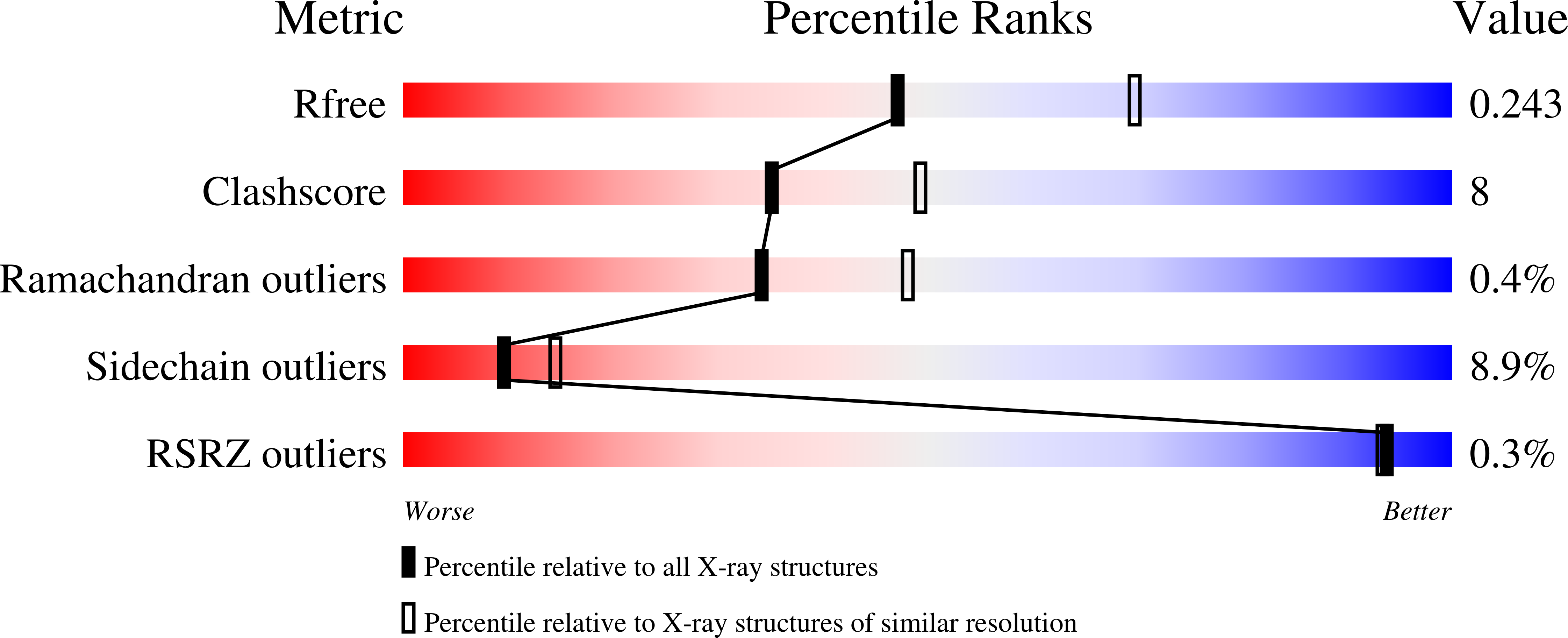The origin of the electrostatic perturbation in acetoacetate decarboxylase.
Ho, M.C., Menetret, J.F., Tsuruta, H., Allen, K.N.(2009) Nature 459: 393-397
- PubMed: 19458715
- DOI: https://doi.org/10.1038/nature07938
- Primary Citation of Related Structures:
3BGT, 3BH2, 3BH3 - PubMed Abstract:
Acetoacetate decarboxylase (AADase) has long been cited as the prototypical example of the marked shifts in the pK(a) values of ionizable groups that can occur in an enzyme active site. In 1966, it was hypothesized that in AADase the origin of the large pK(a) perturbation (-4.5 log units) observed in the nucleophilic Lys 115 results from the proximity of Lys 116, marking the first proposal of microenvironment effects in enzymology. The electrostatic perturbation hypothesis has been demonstrated in a number of enzymes, but never for the enzyme that inspired its conception, owing to the lack of a three-dimensional structure. Here we present the X-ray crystal structures of AADase and of the enamine adduct with the substrate analogue 2,4-pentanedione. Surprisingly, the shift of the pK(a) of Lys 115 is not due to the proximity of Lys 116, the side chain of which is oriented away from the active site. Instead, Lys 116 participates in the structural anchoring of Lys 115 in a long, hydrophobic funnel provided by the novel fold of the enzyme. Thus, AADase perturbs the pK(a) of the nucleophile by means of a desolvation effect by placement of the side chain into the protein core while enforcing the proximity of polar residues, which facilitate decarboxylation through electrostatic and steric effects.
Organizational Affiliation:
Department of Physiology and Biophysics, Boston University School of Medicine, Boston, Massachusetts 02118-2394, USA.














